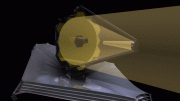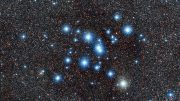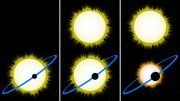
A groundbreaking study by the University of Copenhagen has unveiled the properties of all 28,000 human disordered proteins, challenging traditional protein structure concepts and offering new insights into their role in diseases. Credit: SciTechDaily.com
Research reveals new insights into 28,000 human disordered proteins, altering our understanding of protein structures and functions.
Protein molecules lie at the heart of biology. Our typical understanding of proteins states that each type of protein has a specific three-dimensional shape that enables it to perform its function. This dogma is challenged by intrinsically disordered proteins which make up one-third of all proteins and have central biological functions even though their shapes are constantly changing. Until now, our understanding of the structural properties of this intriguing class of proteins has been based on studies of only a small number of examples.
Breakthrough Research on Disordered Proteins
In research published on January 31 in the journal Nature, researchers from the Department of Biology, University of Copenhagen have shown how all (approximately 28,000) disordered proteins in the human body behave.
“I have always been fascinated by intrinsically disordered proteins because they seem to defy most of the rules of how a protein should behave. For the last 20 years, we have worked on figuring out how these strange proteins look and whether new rules need to be applied to describe them. For the first time, we have now been able to study the structure of all human disordered proteins and begun to provide order into this world of molecular disorder,” says Professor Kresten Lindorff-Larsen, director of the NNF center, PRISM, in which the research was performed.
PRISM Center’s Research Approach
The goal of the PRISM center is to combine computational methods from biophysics and machine learning, with methods from cell biology to study how genetic variants cause disease. But until now, the researchers did not know how most disordered proteins looked, and hence could not even begin to study how mutations in the genes encoding for them might be able to cause disease.
“Until recently, we examined the disordered proteins one-by-one, and it was essential to find a way to study them on a larger scale,” says Assistant Professor Giulio Tesei, who is one of the lead authors of the new paper. Giulio continues: “We came up with an approach where we could use experimental measurements on disordered proteins to develop a computational model to predict their properties. Since this model is both accurate and fast, we can now look at them all.”
Student-Led Contributions and Project Impact
Remarkably, the study was co-led by bachelor student, Anna Ida Trolle, who says: “When I started the project, I didn’t know that you typically just study one or two proteins at a time. So, when Giulio and Kresten suggested that I should study some 28,000 proteins, I, fortunately, didn’t realize how crazy an idea it was. However, we quickly found a way to generate and keep track of the large amount of data and were able to use it to study the biology and evolution of disordered proteins.
Kresten Lindorff-Larsen concludes: “This has been a challenging but also an extremely fun project, that was only made possible by the contributions of several people with diverse expertise in the PRISM center. We have made new steps on linking the molecular properties of disordered proteins to their biological function and roles in disease. Finally, we are beginning to understand the language of disordered proteins.”
Reference: “Conformational ensembles of the human intrinsically disordered proteome” by Giulio Tesei, Anna Ida Trolle, Nicolas Jonsson, Johannes Betz, Frederik E. Knudsen, Francesco Pesce, Kristoffer E. Johansson and Kresten Lindorff-Larsen, 31 January 2024, Nature.
DOI: 10.1038/s41586-023-07004-5
The research was funded by the Novo Nordisk Foundation and the European Union’s Horizon 2020 research and innovation programme under the Marie Skłodowska-Curie: grant agreement No 101025063.









Be the first to comment on "Unraveling the Mysteries of Disordered Proteins"